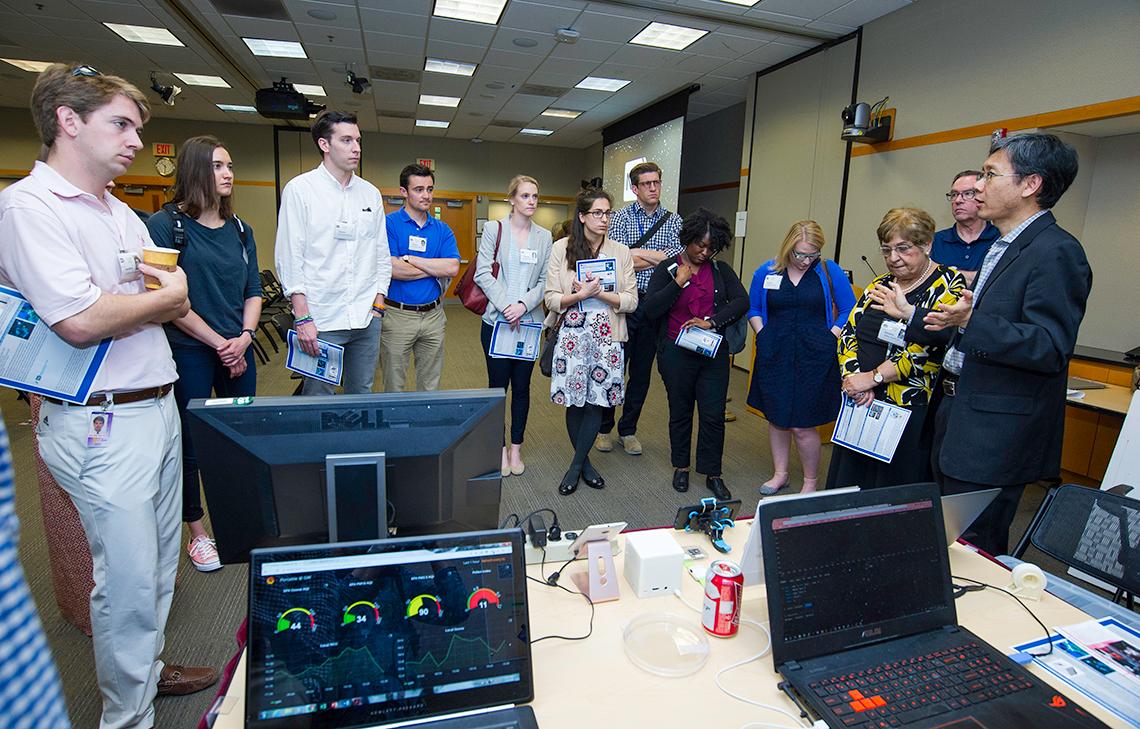Biotech Demonstrations Wow Congressional Staff

A group of 40 congressional staff recently visited NIH for a demonstration of technologies supported by the National Institute of Biomedical Imaging and Bioengineering. NIBIB acting director Dr. Jill Heemskerk reminded attendees that their visit coincided with Star Wars Day, welcoming them to learn about futuristic research projects—in various stages of development and with a range of applications for improving health.
The presentations included a tour of an NIBIB intramural research lab where senior investigator Dr. Hari Shroff and his team have developed a new microscope to study live biological processes at unprecedented speed and resolution. The group also toured the Advanced Imaging and Microscopy Resource Center, a trans-NIH shared resource that houses, operates, disseminates and improves non-commercial, prototype optical imaging systems developed at NIH.

Four table-top demonstrations showcased innovative technologies that address critical health problems:
- Johns Hopkins University researchers demonstrated a point-of-care device for diagnosing chlamydia, along with some other sexually transmitted diseases, in under 30 minutes. The rapid results available at a clinic or doctor’s office allow treatment to begin immediately, improve patient management and reduce the transmission of infection. Currently, the device is approved in Europe and is in the process of FDA approval for use in this country.
- Representatives of Rivanna, a company based in Charlottesville, displayed a technology supported by an NIH Small Business Innovation Research grant that uses a portable ultrasound scanning method to rapidly assess bone fractures. The device could be used by emergency room physicians and/or nurses to determine the best course of care and reduce long waiting times in the emergency room for X-rays. The company had previously received an SBIR grant to develop an ultrasound tool for assisting epidural placement, which is now FDA-cleared and available for use.
- George Washington University researchers demonstrated a technology developed through NIBIB’s Pediatric Research using Integrated Sensor Monitoring Systems (PRISMS) program. This technology consists of a wearable tobacco smoke sensor and a portable air pollution gas monitor. Both sensors connect to a cloud-based informatics system for data storage, management and analytics.
- The winners of NIBIB’s 2017 Design by Biomedical Undergraduate Teams (DEBUT) Challenge showcased the technology they are developing that uses advanced electroencephalogram readings to diagnose Alzheimer’s disease at the first onset of clinical symptoms.

The technology demonstration gave NIBIB-affiliated researchers the opportunity to show the legislative aides who attended how taxpayer dollars are being used to solve health problems and how NIBIB is fulfilling its mission to lead the development and accelerate the application of biomedical technologies to improve health.—Christine Cooper
